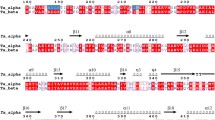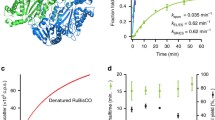Abstract
We describe an original chaperonin-based reactor that yields folded and active proteins from denatured materials. We used the 920-kDa chaperonin of the archaeon Sulfolobus solfataricus, which does not require any protein partner for its full activity and assists in vitro folding with low substrate specificity. The reactor consists of an ultrafiltration cell equipped with a membrane that retains the chaperonin in a functional state for folding in solution and permits the flowthrough of the folded substrates. By studying the ATP-dependent functional cycle of the chaperonin, we were able to use the reactor for repeated refolding processes. The scale-up of the reactor is made possible by the overproduction of chaperonin in Sulfolobus solfataricus cells that acquired thermotolerance upon appropriate heat shock.
Similar content being viewed by others
Author information
Authors and Affiliations
Additional information
Received: January 24, 1999 / Accepted: August 7, 1999
Rights and permissions
About this article
Cite this article
Cerchia, L., Rossi, M. & Guagliardi, A. An archaeal chaperonin-based reactor for renaturation of denatured proteins. Extremophiles 4, 1–7 (2000). https://doi.org/10.1007/s007920050001
Issue Date:
DOI: https://doi.org/10.1007/s007920050001




